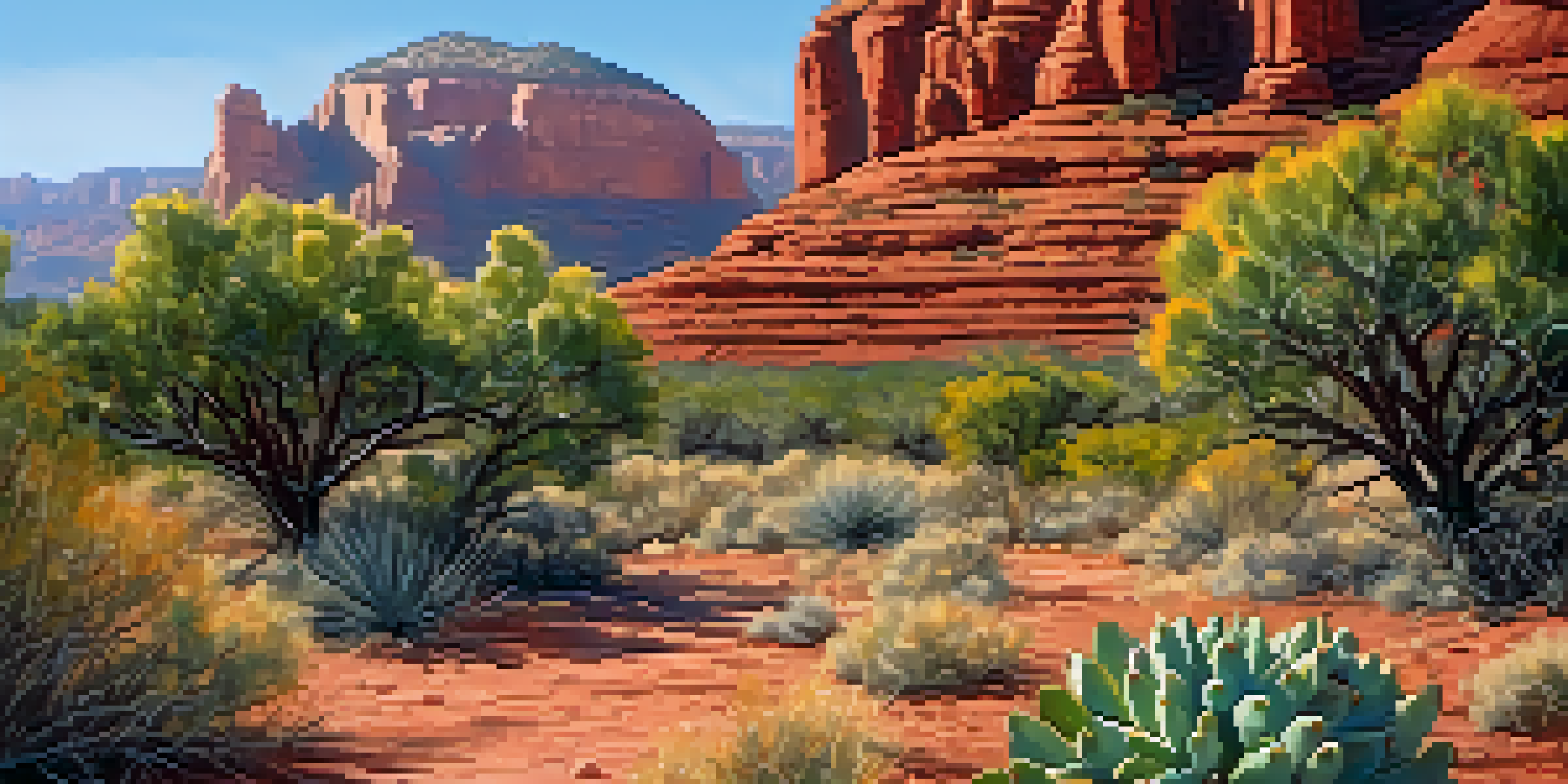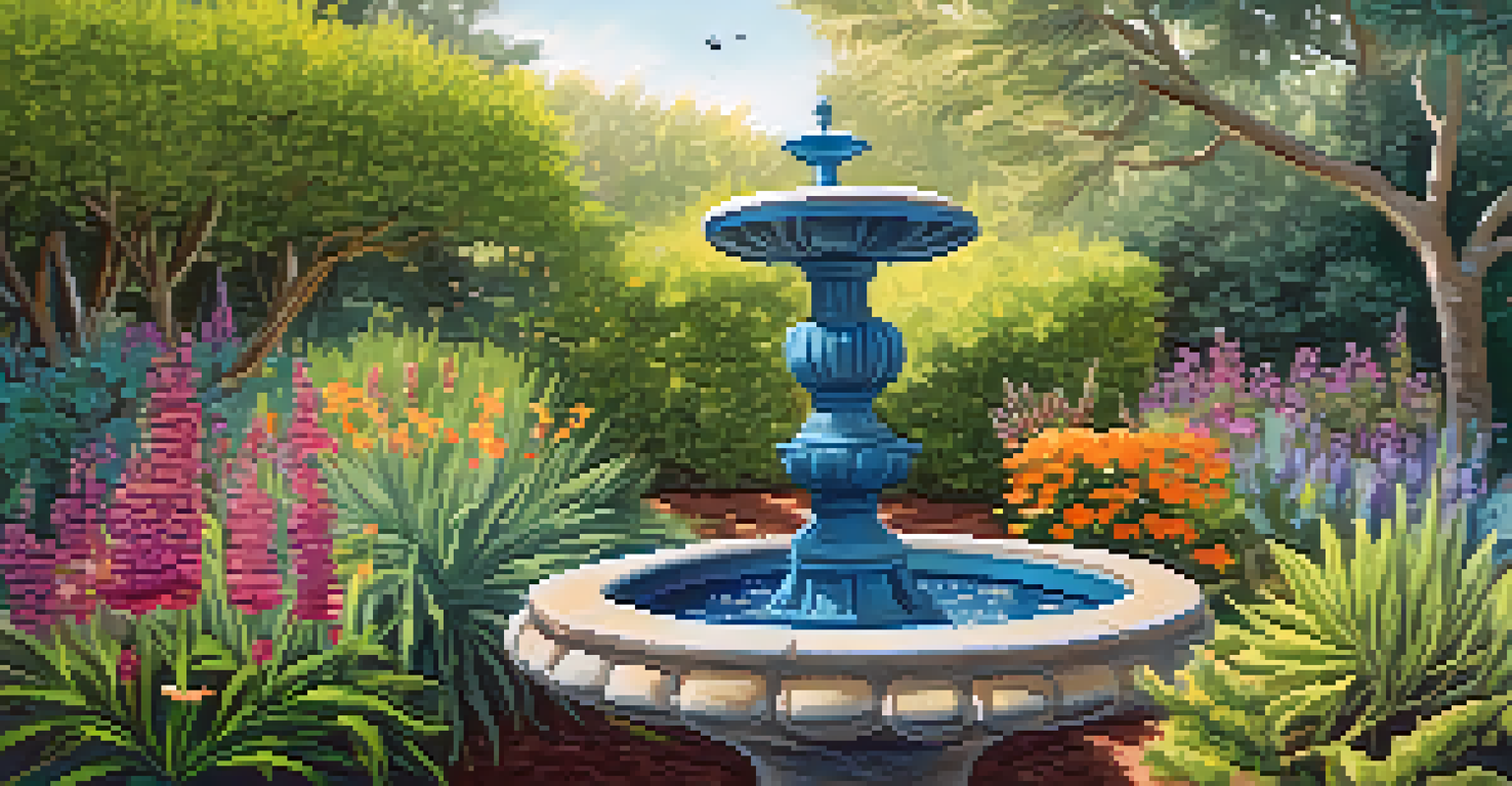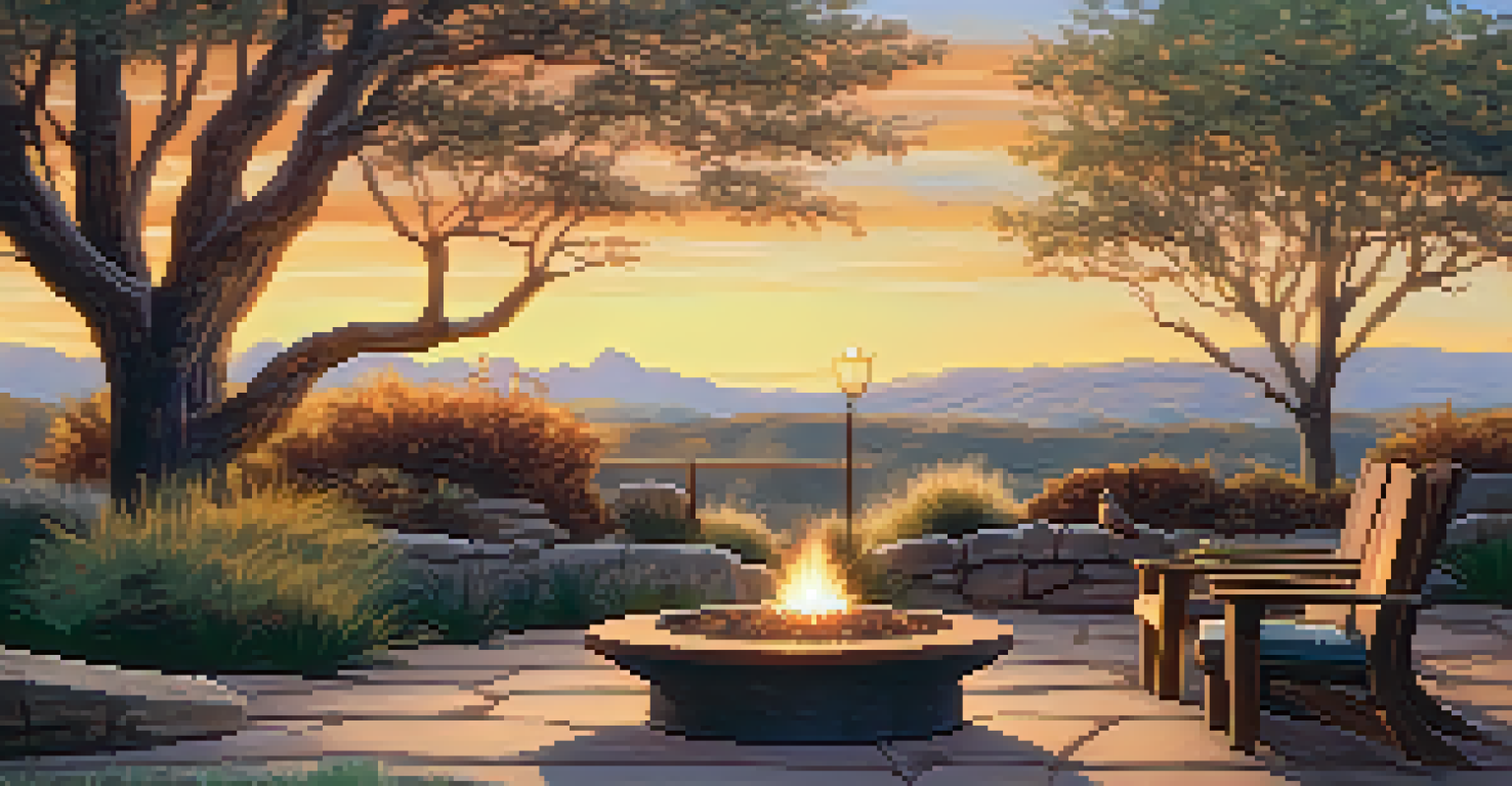Sedona's Native Landscaping: Enhancing Eco-Friendly Homes

Understanding Native Landscaping in Sedona
Native landscaping refers to the practice of using plants that are indigenous to a specific area. In Sedona, this means incorporating species that thrive in the local climate and soil conditions, promoting biodiversity. This approach not only creates a visually appealing environment but also supports local wildlife and pollinators, such as bees and butterflies.
The greatest threat to our planet is the belief that someone else will save it.
By choosing native plants, homeowners can reduce water usage significantly, a crucial consideration in Arizona's arid climate. These plants are adapted to survive the region's temperature fluctuations and drought conditions, making them a sustainable choice. Plus, they require less maintenance compared to exotic plants, allowing homeowners to enjoy their gardens without excessive effort.
Incorporating native landscaping into your home not only enhances its aesthetic appeal but also creates a sense of place. It connects residents to their natural surroundings, fostering a deeper appreciation for the unique beauty of Sedona. This connection can lead to a more environmentally conscious community that values sustainability.
Benefits of Native Plants for Eco-Friendly Homes
One of the most significant benefits of using native plants is their low water requirement. Unlike non-native species that often need regular watering, native plants are drought-tolerant, making them perfect for Sedona's dry climate. This not only conserves precious water resources but also reduces the need for irrigation systems, which can be costly to install and maintain.

Additionally, native plants help improve soil health and prevent erosion. Their deep-root systems stabilize the soil, promote nutrient cycling, and protect against runoff. This means that homeowners can enjoy a landscape that supports the ecosystem while also reducing maintenance and upkeep costs.
Embrace Native Plants for Sustainability
Using native plants in Sedona promotes biodiversity, conserves water, and supports local wildlife.
Planting native species also encourages a robust array of wildlife, which can enhance the beauty and functionality of a garden. Birds, insects, and other wildlife find food and habitat in native gardens, creating a lively outdoor space. This biodiversity contributes to a balanced ecosystem, further underscoring the importance of native landscaping.
Designing Your Native Landscape: Key Considerations
When designing a native landscape, start by assessing your yard's sun and shade patterns. Different native plants have specific light requirements, so understanding your space is essential for success. Incorporating a mix of plant heights and colors can create visual interest and promote biodiversity.
Nature does not hurry, yet everything is accomplished.
Consider grouping plants based on their water needs, which will simplify maintenance and ensure that each species flourishes. For example, place drought-tolerant plants together while allowing more moisture-loving plants to have their designated area. This strategic planning can make your garden both functional and beautiful.
Lastly, think about incorporating hardscapes like rocks, paths, and seating areas that complement the natural environment. These elements can enhance the usability of your outdoor space while blending seamlessly with the native flora. A well-designed landscape not only showcases the beauty of Sedona but also invites you to spend more time outdoors.
Incorporating Edible Native Plants into Your Landscape
Many native plants in Sedona are not only beautiful but also edible. Incorporating these varieties can enhance your garden's functionality while promoting sustainability. For example, consider planting native fruits like prickly pear or serviceberry, which add delicious flavors to your meals.
Edible native plants can also attract beneficial wildlife, such as pollinators, which help in the growth of your garden. By creating a space that encourages both human enjoyment and ecological balance, you can foster a thriving environment that benefits everyone. Plus, homegrown produce always tastes better!
Designing Functional Native Landscapes
Strategically planning your native garden enhances its beauty and ensures the health of various plant species.
Moreover, planting native edible species can reduce the need for store-bought produce, cutting down on transportation-related carbon emissions. This small change can contribute to a larger movement towards sustainability, demonstrating how personal choices can have a significant impact on the environment.
Creating Wildlife Habitats in Your Yard
A native landscape can serve as a sanctuary for local wildlife. By providing food, water, and shelter through native plants, homeowners can create a thriving habitat for birds, insects, and other animals. This not only supports biodiversity but also enriches the outdoor experience.
Adding features such as birdbaths, bee hotels, and native shrubs can attract various species, fostering a lively ecosystem. Watching local wildlife thrive in your garden can be immensely rewarding, offering a direct connection to nature. It's a wonderful reminder of the importance of preserving our natural habitats.
Incorporating native landscaping as a wildlife habitat can also educate you and your community about the local ecosystem. By understanding how various species interact, we can better appreciate the importance of environmental stewardship. This connection to nature can inspire others to adopt similar practices, fostering a culture of sustainability in Sedona.
Maintaining and Caring for Your Native Landscape
While native plants are generally low-maintenance, they still require some care to thrive. Regular watering during their establishment phase is crucial, especially in Sedona's dry climate. After that, most native plants can fend for themselves, making them a practical choice for busy homeowners.
Weeding is another essential aspect of maintenance. Keeping invasive species at bay ensures that your native plants have the resources they need to flourish. A well-maintained native garden not only looks beautiful but also supports the local ecosystem by providing a healthy habitat for wildlife.
Get Involved with Local Resources
Sedona offers numerous resources and community support for homeowners interested in sustainable native landscaping.
Lastly, consider seasonal clean-up and mulching to retain moisture and suppress weeds. Native landscaping allows for a more natural approach to yard care, emphasizing ecological balance over rigid control. By following these simple maintenance tips, you can enjoy a thriving native landscape that enhances your eco-friendly home.
Getting Involved: Local Resources and Community Support
Sedona offers a wealth of resources for homeowners interested in native landscaping. Local nurseries often provide a selection of native plants, and many offer workshops on sustainable gardening practices. Engaging with these resources can help you make informed decisions about which plants will thrive in your garden.
Additionally, community organizations often host events focused on environmental conservation and native plant education. Participating in these activities not only enhances your knowledge but also connects you with like-minded individuals who share your passion for sustainability. These connections can lead to valuable partnerships and shared resources.

Lastly, consider joining local online forums or social media groups centered around native landscaping. These platforms can provide ongoing support, tips, and inspiration for your gardening journey. By becoming part of a community that values eco-friendly practices, you contribute to a collective effort to enhance Sedona's natural beauty.